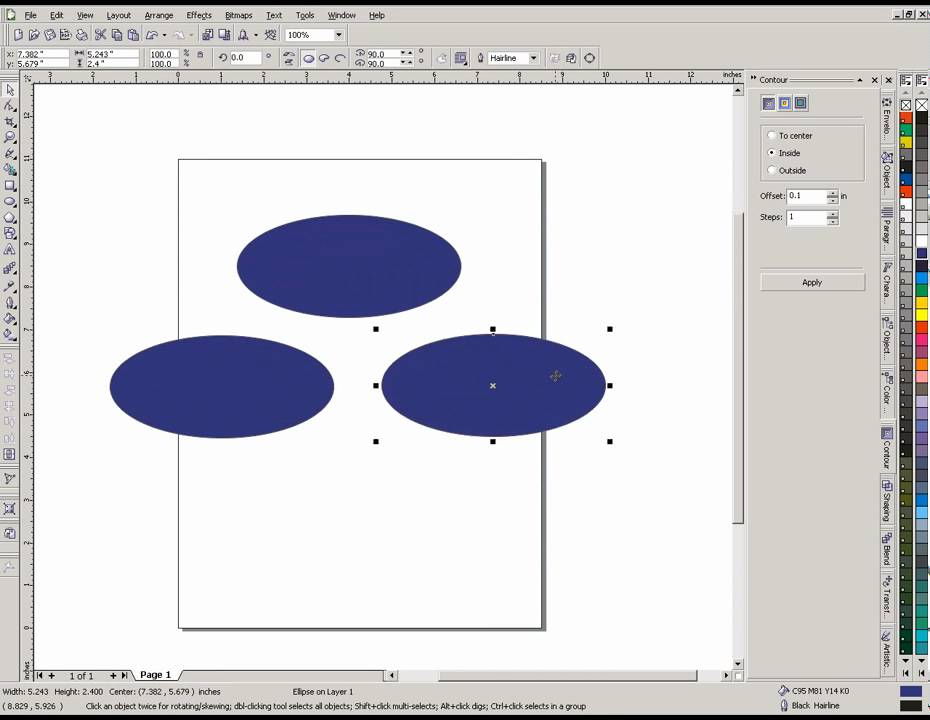
Introduction:
CorelDRAW stands as a paragon in the realm of graphic design, offering a myriad of tools and features that empower designers to bring their creative visions to life. Among the fundamental skills in CorelDRAW is the ability to paste objects into a drawing with precision. This comprehensive guide is dedicated to unraveling the intricacies of pasting objects in CorelDRAW, catering to both beginners seeking foundational insights and experienced designers aiming to refine their skills.
I. Understanding the Significance of Pasting Objects:
- Seamless Integration: Pasting objects into a drawing allows for the seamless integration of external elements, facilitating the creation of complex compositions. This process is essential for combining diverse design elements into a cohesive whole.
- Creative Flexibility: The ability to paste objects enhances creative flexibility, enabling designers to leverage existing elements or external content in their designs. This flexibility is particularly valuable when working on collaborative projects or utilizing pre-designed assets.
II. Basics of Copying and Pasting:
- Copy Command Recap: Before pasting, ensure that the desired object is copied using the Copy command (Ctrl + C) or right-clicking on the object and selecting Copy from the context menu. The copied object is stored on the clipboard.
- Clipboard Functionality: The clipboard is the virtual space where copied or cut objects reside temporarily. Understanding how CorelDRAW interacts with the clipboard is crucial for a smooth pasting process.
III. Pasting Objects into a Drawing: A Step-by-Step Guide:
- Selecting the Destination: Navigate to the location within the drawing where you want to paste the copied object. Use the Pick tool to select the appropriate position, ensuring that the cursor is placed precisely.
- Accessing the Paste Command: Navigate to the Edit menu and locate the “Paste” option. Alternatively, use the keyboard shortcut “Ctrl + V” to initiate the paste command. Clicking on the Paste option duplicates the copied object at the selected location.
- Adjusting Position and Size: After pasting, use the transformation handles to adjust the position, size, or orientation of the pasted object. The Paste command initially places the object in the same orientation as the copied version.
IV. Paste Special Options:
- Retaining Formatting: CorelDRAW offers “Paste Special” options for enhanced control. Choose whether to retain or discard formatting during the pasting process, ensuring that the pasted object aligns seamlessly with the overall design.
- Pasting into a Specific Layer or Group: When using Paste Special, designers can specify the layer or group into which the object will be pasted. This feature is particularly useful in designs with complex layer structures, ensuring proper organization.
V. Troubleshooting and Best Practices:
- Checking Clipboard Contents: Before pasting, verify the content on the clipboard. If the clipboard contains unwanted or outdated content, it may lead to unintended results. Clear the clipboard or copy the desired object to ensure accurate pasting.
- Undo/Redo Functionality: The Undo (Ctrl + Z) and Redo (Ctrl + Y) commands in CorelDRAW provide a safety net for reverting actions. If the pasted object is not in the desired location or orientation, use these commands to navigate through the editing history.
VI. Advanced Techniques for Object Pasting:
- Pasting into a PowerClip: CorelDRAW’s PowerClip feature allows designers to paste objects into a container, creating dynamic compositions. Select the object to be pasted and the PowerClip container, then use the Paste Into command for intricate design arrangements.
- Interactive and Dynamic Pasting: Utilize the dynamic nature of CorelDRAW by pasting objects interactively. Adjust the position, size, and orientation in real-time, exploring various design possibilities before finalizing the placement.
VII. Collaboration and Pasting Objects:
- Sharing Design Elements: Collaborators can share design elements by copying and pasting objects across CorelDRAW documents. Ensure that collaborators have access to the same assets or provide them with exported design elements for seamless collaboration.
- Version Compatibility: When pasting objects between different versions of CorelDRAW, be mindful of version compatibility. Some features or formatting may not transfer accurately between versions, impacting the design’s integrity.
VIII. Documenting Pasting Processes:
- Tutorials and Design Processes: For educational or collaborative purposes, document the process of pasting objects. Create tutorials, design process documents, or annotations within the design file to guide team members or future reference.
- Maintaining Design Consistency: When pasting objects from external sources, ensure design consistency by adapting colors, styles, and formatting to align with the overall design aesthetics. This practice contributes to a cohesive visual experience.
Conclusion:
In conclusion, the ability to paste objects into a drawing in CorelDRAW is a fundamental skill that elevates the efficiency and creativity of the design process. As designers navigate through the step-by-step guide and explore advanced techniques, they gain a deeper understanding of the tools available for precise and dynamic object pasting. By incorporating troubleshooting tips, best practices, and collaborative strategies, designers can navigate the intricacies of pasting objects with confidence and precision. Embrace the versatility and creative potential that pasting objects offers in CorelDRAW, and let your designs flourish with a seamless integration of diverse elements.